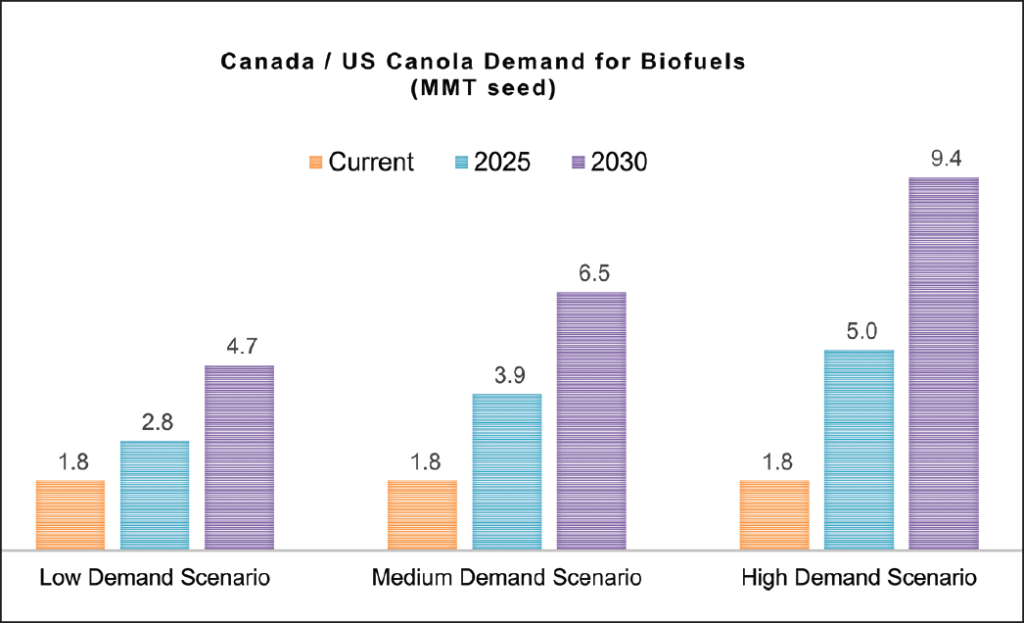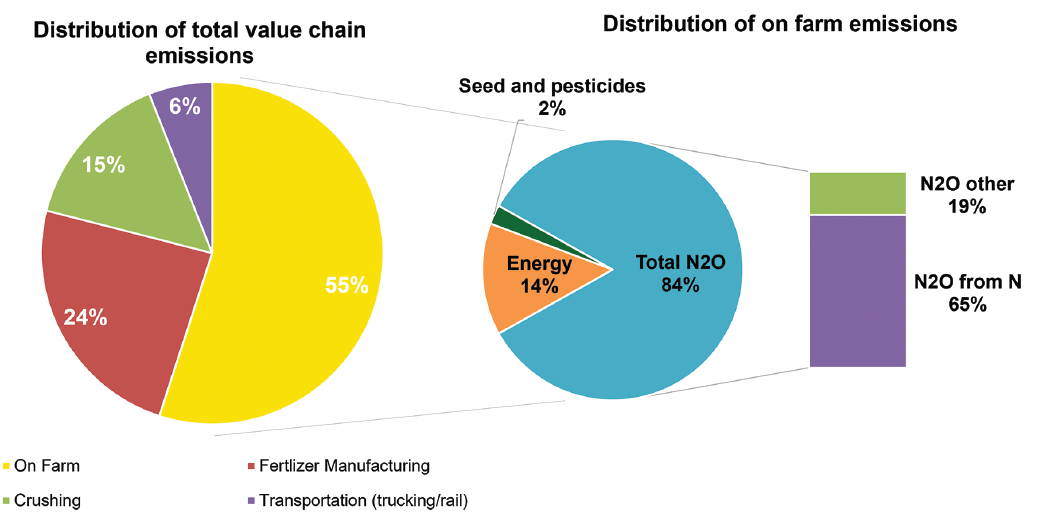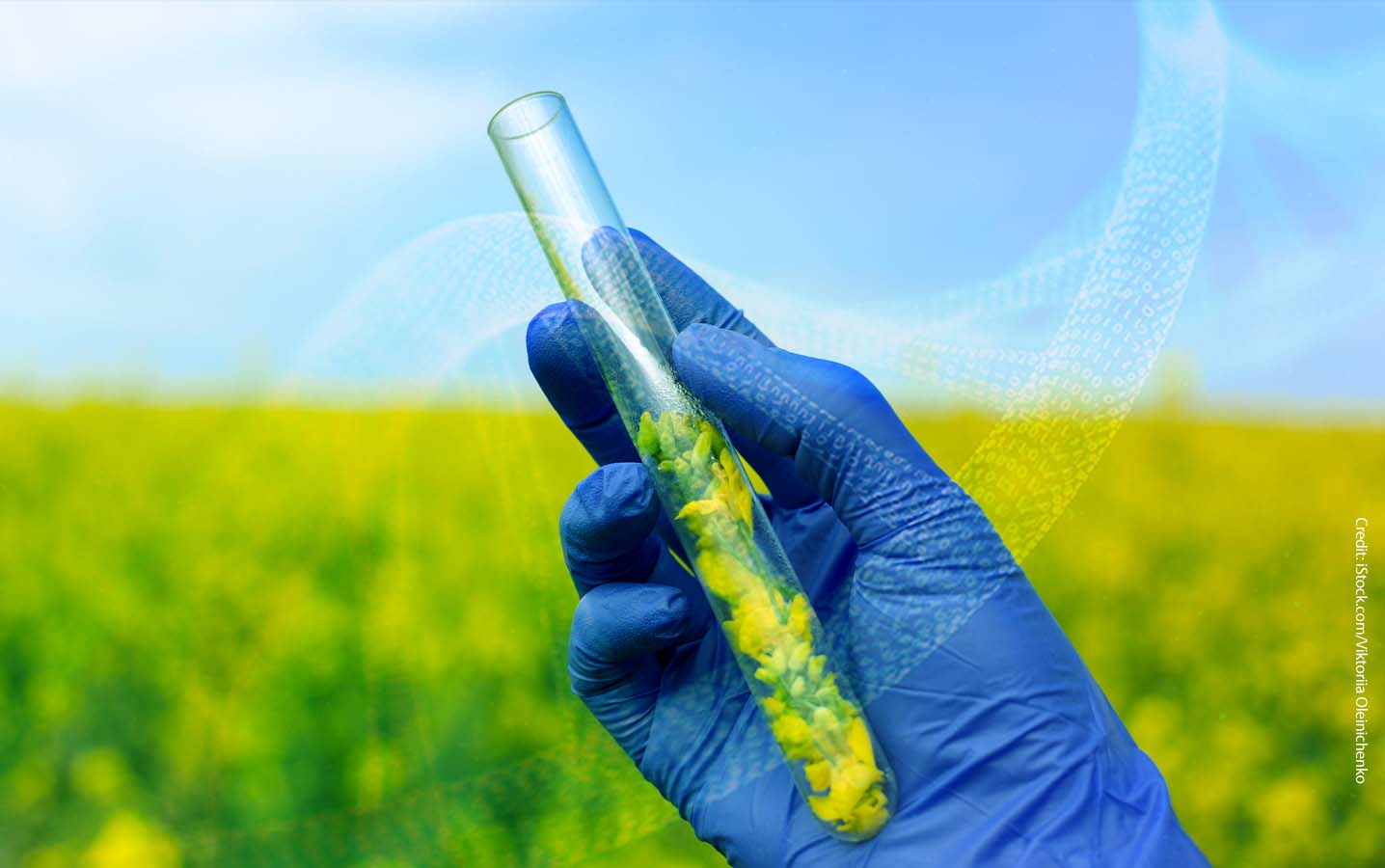Research essential to help canola meet strong demand
Canola contributes nearly $30 billion annually to the Canadian economy, including more than 207,000 Canadian jobs. That contribution increased by 35 per cent in the last decade alone. Looking at today’s business climate, the word that comes to mind is “unpredictable”. The global trade environment is buffeted by challenges:
- Recovery from the global pandemic is uneven, disrupted by a tenacious virus and related supply chain challenges;
- The trade disruption in canola seed with China continues;
- And global efforts to mitigate climate change are altering the commercial environment with taxes and regulation.
But, the fundamentals of global demand are in our favour:
- The world’s growing middle class is continuing to seek out healthier food products like canola oil and canola protein.
- Palm oil growth has slowed as the industry has been challenged by
sustainability concerns. - And there is growing demand in new areas – including aquaculture and protein for human food ingredients.
- Most significantly, as part of the global effort to address climate change, more countries are introducing renewable fuel mandates to reduce greenhouse gas emissions. Canada and the U.S. are among them.
This is a huge opportunity for our industry because canola oil is one of the best feed stocks available for renewable fuels. (See Image 1.)

The CCC is very active in discussions with the Government of Canada as work is done to finalize the Clean Fuel Regulations, which we anticipate will be in place by the end of 2022. If done properly, the standard will drive new demand for canola.
The impact of these two factors – high demand for Canada’s sustainably- produced, healthy oil for food use and low carbon emission canola for diesel fuel – are driving investment and growth in our industry.
By 2025, Canada will be able to process 62 per cent more canola seed than today, thanks to more than $2 billion in capital investments announced by our canola processors in 2021 and early 2022.
One of the biggest challenges facing our industry is growing more canola to keep up with demand. Canada’s canola industry has a strategic target to achieve average yields of 52 bu./ac. to meet global market demand of 26 million tonnes of production by 2025.
Meeting our yield target is job number one. To get there, growers will need continued advancements in agronomic practices, as well as access to new tools, like higher-yielding cultivars, smart fertilizers and a wider range of resistance to disease, extreme weather and pod shatter.
CANOLA IS A SOLUTIONPROVIDER FOR THE ENVIRONMENT
From the expression of global commitments evident in the recent Glasgow COP26 meetings, to the domestic biofuels agenda, to the recent “Guelph Statement” of federal-provincial-territorial agriculture ministers, climate change and the environment will be a critical lens through which research priorities and funding will be considered.
The canola sector is a ‘solution-provider’ when it comes to the environment. Canola takes carbon from the atmosphere and turns it into oil and protein that we can use for food and fuel. As it grows, it takes carbon from the atmosphere and sequesters it in the soil.
As our industry increases production intensification to meet our goal of 52 bu./ac. by 2025, we will sequester an additional five million tonnes of greenhouse gas (GHG) emissions in the soil each year.
Used in renewable fuels production, canola can reduce GHG emissions by up to 90 per cent relative to traditional, petroleum-based diesel fuel, which is why canola demand will increase with government policy to mitigate climate change.
Canadian grain farmers also contribute to production sustainability. Growers care deeply about their stewardship of their most valued resource: their land. We need to focus on providing the science-based knowledge and discovery to support them.
I hear a lot about ESG these days – Environmental, Social, Governance. For me, the grower has been there well before others. Growers have been quick to adopt technology that improves environmental outcomes – from no-till to pod shatter resistance. Growers are invested in passing their operations on through the family and aim to improve the productive capability of the land for their children. In the social realm, rural communities draw their energy from growers – who populate the school boards, coach hockey and employ thousands across Canada.
Sustainability is a journey, not a destination. How do we, as an industry, continue to provide innovative products and practices to the grower and the whole value chain, which meet our goals for increased production to meet global demand, while ensuring sustainability and reducing emissions? Investment in innovation and research will be the answer.
“With continued investment and teamwork in agronomic research and innovation, we are confident we can break through to the next level of on-farm productivity.”
– Jim Everson
NITROGEN EMISSIONS REDUCTION
The “Guelph Statement” released November 2021 set out priorities that will influence the federal government’s next five-year agriculture policy framework. Included among those priorities are tackling climate change and environmental protection to support GHG emission reductions, which is also reflected in the federal government’s previously stated objective of a 30 per cent emissions reduction target for nitrogen fertilizers by 2030. (See Guelph Statement graphic on page 13.)
Nitrogen fertilizer is a critical tool in growing the world’s healthiest vegetable oil. (See Image 2.)
Reducing emissions from fertilizer cannot mean simply regulating reductions in fertilizer use. To do so would hinder the competitiveness of Canadian canola farmers in global markets and their ability to meet the world’s needs for a healthy vegetable oil. Rather, the objective must be innovating to reduce emissions from fertilizer use, supporting growers in moving to more precise fertility practices and crediting the grower and industry for sequestering carbon through canola production.
To meet these objectives and to comply with the federal government’s climate change goals will require a substantial government investment. The Royal Bank of Canada issued a report to describe the investment required to meet the government’s commitments to GHG emission reduction. The report suggests an investment of $2.5 billion annually would be required to tackle climate change in agriculture alone.

INVESTMENT IN CANOLA RESEARCH
At this critical time, we need to remind governments that canola is poised to continue to drive economic growth, and that canola research is an essential investment in Canada’s economic future.
With continued investment and teamwork in agronomic research and innovation, we are confident we can break through to the next level of on-farm productivity. And we can do it in a way that is truly sustainable and aligned with market demands.
Getting there will require the cooperation of our partners in government – as both research partners and policymakers. We also need the commitment, ideas and enthusiasm of the entire canola value chain. These strengths are the lifeblood of our sector and have never been more essential than right now.
-Jim Everson is president of the Canola Council of Canada. For the complete presentation, including the video and transcript, go to canolacouncil.org/news and look for “Update: Jim Everson provides remarks on ‘Navigating change through innovation’ at Canola Week”.





